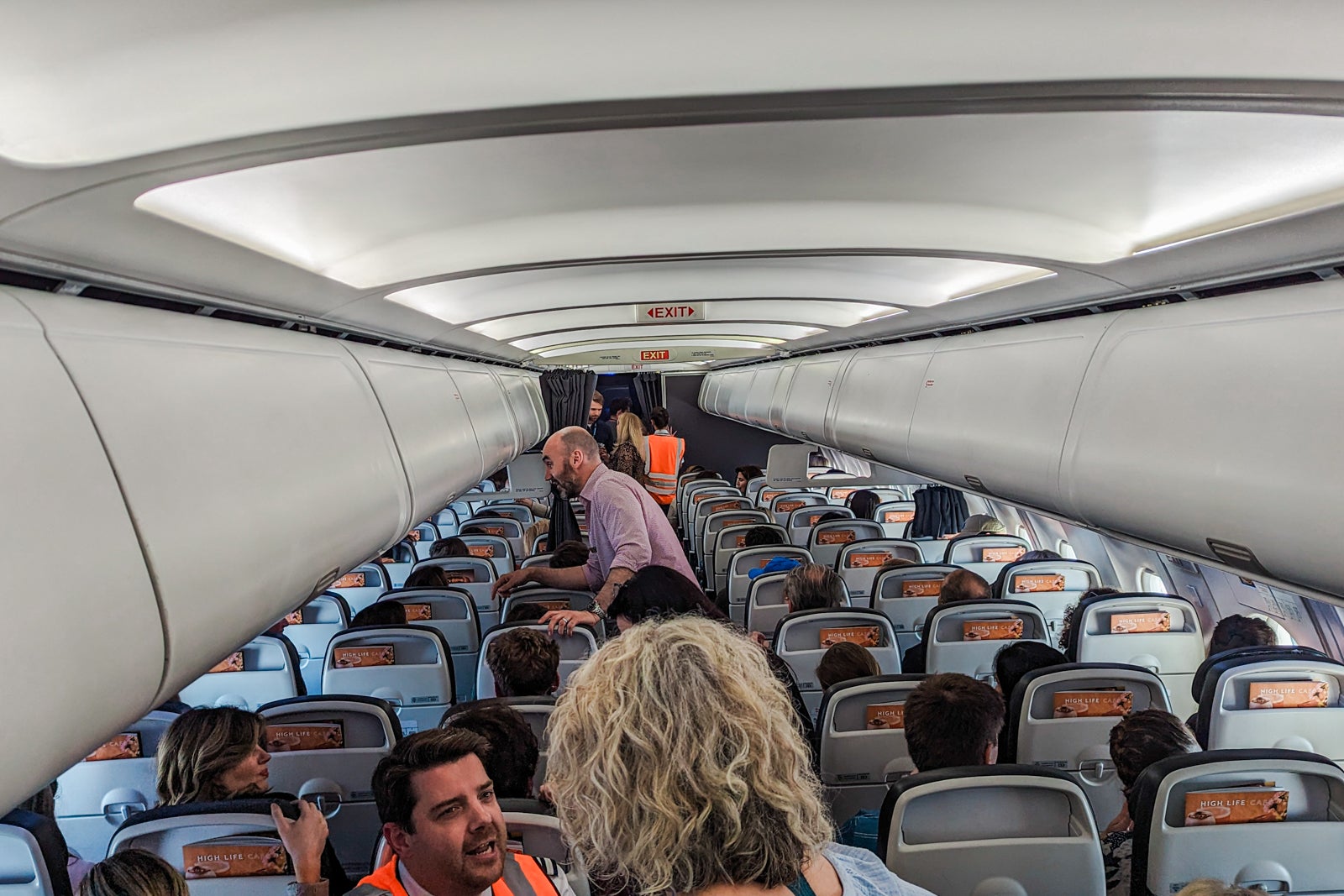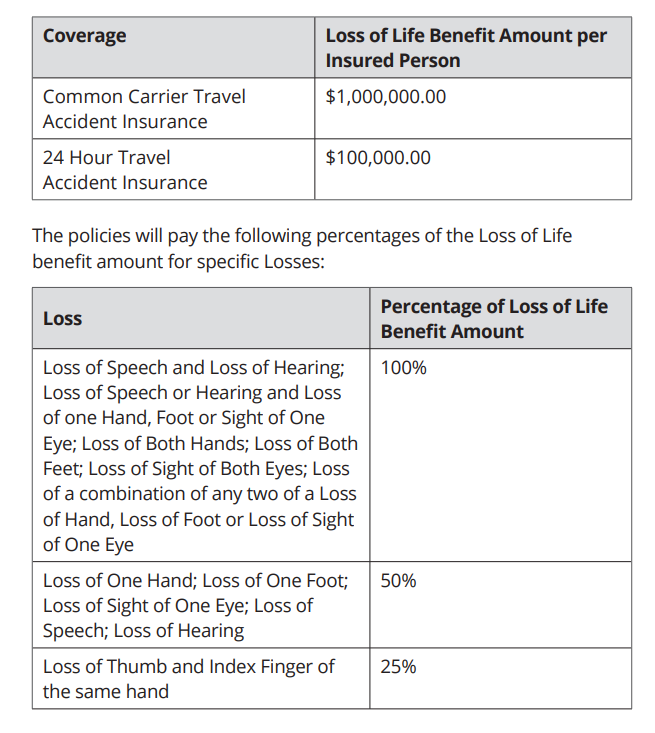
What is covered by the credit card travel emergency evacuation and accident insurance?
Many of the benefits that come with your credit card are well known and used. These benefits are not exclusive to travel credit cards. Many standard credit cards come with travel protection and insurance. These benefits are not exclusive to travel credit cards, and many standard credit cards come with travel protection and insurance.
Travel accident insurance
Often called common carrier insurance, this policy pays in case of death, loss of eyesight or loss of limb(s) while on a plane, train, ship or bus licensed to carry passengers and available to the public.
A few cards also have travel accident insurance that offers protection for the entire duration of a trip (up to 31 days long) but pays out less than the common carrier insurance policies. To be eligible, you must typically pay for the entire fare with your eligible credit card.
LEEYIUTUNG/GETTY IMAGES
Different credit cards have different payment tables for how much your beneficiary would receive in case of death, losing one limb, losing two limbs, losing sight in one eye or becoming legally blind. The cardholder’s spouse, domestic partner, and dependent children are also covered. You can submit a letter to the card issuer to establish another beneficiary.
Emergency evacuation insurance
In the past, when traveling to remote destinations like the Maldives and Fiji, I bought third-party emergency medical evacuation insurance, not realizing the cards I already had would have covered me. There are a few crucial aspects of emergency evacuation insurance offered by credit cards that you need to understand and follow so you don’t compound your medical situation with the stress of financial hardship:
Everything must be approved and coordinated through a benefits administrator. You or your companions can call this person when you first feel like you might need help. You will not be reimbursed for anything that you decide to pay for on your own.
Evacuation does not mean repatriation. You won’t get evacuated to the U.S. if you are far away. Most policies state you’ll be moved to the nearest medical facility capable of proper care.
Preexisting conditions may lead to your request for evacuation at the credit card provider’s expense being denied. Read your credit card’s full terms and benefits guide to see which excludes these conditions and the credit card’s definition of a preexisting condition.
The coverage is only for the cost of evacuation and medical care during transportation. Once you’re back on the ground, you still need medical insurance to pay the doctors and staff who provide care.
- Some cards have country exclusions, so don’t expect to head into Syria or Afghanistan and rely on your credit card benefits administrator to get you to a hospital.
- Daily Newsletter
- Reward your inbox with the TPG Daily newsletter
- Join over 700,000 readers for breaking news, in-depth guides and exclusive deals from TPG’s experts
- CHALABALA/GETTY IMAGES
To get all the relevant information, download and read the entire section of the benefits guide pertaining to these coverages. Here are a few cards offering travel accident and/or emergency evacuation insurance.
The Platinum Card from American Express
The Platinum Card(r) from American Express
offers among the most generous emergency evacuation insurance of any card.
There’s no cost cap, and benefits are extended to immediate family and children under 23 (or under 26 if enrolled full-time in school). The best part is that you don’t have to use your card to pay for a trip. The Premium Global Assist administrator will coordinate all the details to ensure that there are no costs. Other American Express cards provide access to the PremiumGlobalAssistHotline. You will have to pay for any coordination. Make sure you read your Amex card’s benefits guide carefully.
To learn more, see our full review of the Amex Platinum.
Related: Your complete guide to Amex travel protections*Eligibility and benefit level varies by card. Conditions and limitations may apply. Visit americanexpress.com/benefitsguide for details. Emergency medical transportation assistance is free if approved by Premium Global Assist Hotline and coordinated. In any other circumstance, cardmembers are responsible for the costs charged by third-party service providers.
Apply here:
Amex Platinum
Chase Sapphire Reserve and Chase Sapphire Preferred cards
The Chase Sapphire Reserve(r) offers two travel accident insurance benefits: common carrier travel accident insurance and 24-hour travel accident insurance. The first applies when you are a passenger on a common carrier, or when entering or leaving it. The latter applies any time during your trip — but you cannot be paid out on both the common carrier and 24-hour policies.
If you use your Chase Ultimate Rewards points to book your trip, you are covered under the card’s benefits.
People eligible for coverage include yourself, plus “
spouse, and parents thereof; sons and daughters, including adopted children and stepchildren; parents, including stepparents; brothers and sisters; grandparents and grandchildren; aunts or uncles; nieces or nephews; and Domestic Partner and parents thereof, including domestic partners and spouses of any individual of this definition. “
Chase pays up to $1,000,000 for a common carrier loss and up to $100,000 for a 24-hour policy loss based on the following table:
CHASE.COMSome interesting exclusions with Chase that would prevent a payout include the insured person participating in a motorized vehicular race or speed contest, the insured person participating in any professional sporting activity for which they received a salary or prize money, skydiving or if the insured person traveling or flying on any aircraft engaged in flight on a rocket-propelled or rocket-launched aircraft.
The Chase Sapphire Reserve also offers emergency evacuation insurance. If you or an immediate family member paid for at least a portion of your trip with the card, you’re eligible for up to $100,000 in emergency medical evacuation.
Your covered trip must last between five and 60 days and be at least 100 miles from your residence. The benefits administrator will arrange for your relative or friend who is hospitalized longer than eight days to fly back to you in economy class. The benefits pay up to $500,000 for a common carrier loss and up to $100,000 for a 24-hour policy loss based on the following table:
CHASE.COM
Make sure to carefully read through your guide to benefits so that you know what your Chase Sapphire card does and does not cover. The benefits pay up to $500,000 for a common carrier loss and up to $100,000 for a 24-hour policy loss based on the following table:[a]CHASE.COM
Make sure to carefully read through your guide to benefits so that you know what your Chase Sapphire card does and does not cover.
To learn more, see our full reviews of the Chase Sapphire Reserve and Chase Sapphire Preferred.
Related: 4 times your credit card’s travel insurance can help with travel woes, and 7 times it won’t
Apply here: Chase Sapphire Reserve and Chase Sapphire Preferred
United Club Infinite Card
The top-tier United Club(sm) Infinite Card offers travel accident and emergency evacuation insurance. Travel accident insurance can cover up to $500,000.
The United Club Infinite Card also offers emergency evacuation coverage. Keep in mind that the United Club Infinite’s benefits may have terms that differ from other Chase cards, so read through your card’s guide to benefits for more information.
To learn more, see our full review of the United Club Infinite Card.
Apply here: United Club Infinite
Bottom line
We hope none of us ever have to worry about either of these policies, but it’s nice to have peace of mind if you or your family need emergency assistance. This reassurance is one more reason to ensure one of these cards is always in your wallet when traveling.
The benefit guides of all cards are updated regularly, so make sure you don’t toss them in the trash when updates show up in the mail and read the online guides for the latest terms and conditions.






